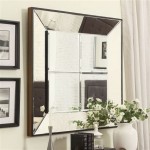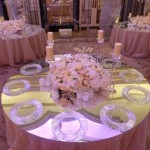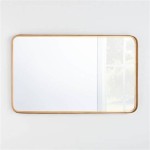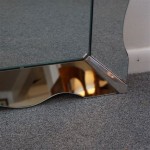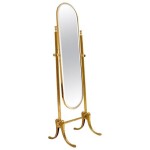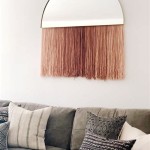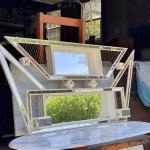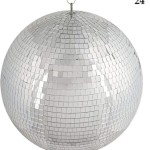How To Apply Mirror Tiles to a Wall
Applying mirror tiles to a wall can dramatically transform a space, adding depth, light, and a touch of modern elegance. However, a successful installation requires careful planning, precise execution, and the right materials. This article provides a comprehensive guide to applying mirror tiles, ensuring a professional and aesthetically pleasing result.
Preparing the Wall Surface
The foundation for a successful mirror tile installation is a properly prepared wall surface. This involves several key steps to ensure the tiles adhere correctly and remain secure over time. A smooth, clean, and structurally sound surface is paramount.
The first step is to thoroughly clean the wall. Remove any dust, dirt, grease, or existing wallpaper. A simple solution of warm water and mild detergent is often sufficient. For stubborn grease or grime, a degreaser specifically designed for walls may be necessary. Allow the wall to dry completely before proceeding to the next step.
Inspect the wall for any imperfections, such as holes, cracks, or unevenness. These imperfections must be addressed to ensure a flat and even surface for the mirror tiles. Small holes and cracks can be filled with spackle or drywall compound. Apply the compound according to the manufacturer's instructions and allow it to dry completely before sanding it smooth. For larger imperfections, more extensive repairs may be required, such as replacing damaged sections of drywall.
Sanding the wall is crucial for creating a smooth surface and promoting adhesion. Use a fine-grit sandpaper (120-grit or higher) to lightly sand the entire wall. This will remove any remaining imperfections and create a slightly textured surface that will allow the adhesive to grip better. After sanding, remove all dust with a damp cloth or vacuum cleaner.
Priming the wall is a highly recommended step, especially for porous surfaces like drywall. Primer helps to seal the surface, creating a uniform base for the adhesive. It also improves the adhesion of the adhesive to the wall, ensuring a long-lasting bond. Choose a primer that is compatible with the adhesive you will be using and apply it according to the manufacturer's instructions. Allow the primer to dry completely before proceeding.
Finally, before applying the mirror tiles, ensure the wall is perfectly level. Use a level to check for any significant deviations. If the wall is severely uneven, it may be necessary to shim the tiles or apply a leveling compound to the wall before installation. Failure to address an uneven wall can result in a distorted or unprofessional-looking finish.
Choosing the Right Materials and Tools
Selecting the appropriate materials and tools is essential for a successful mirror tile installation. Using the wrong materials can lead to adhesion problems, damage to the tiles, or an unsatisfactory finished product. Careful consideration should be given to each item based on the specific requirements of the project.
The most crucial material is the mirror tiles themselves. These are available in a variety of shapes, sizes, and thicknesses. Consider the overall design of the space and choose tiles that complement the existing décor. Thicker tiles tend to be more durable and less prone to breakage. Ensure the tiles are of high quality and have a smooth, reflective surface.
Selecting the correct adhesive is critical for ensuring the mirror tiles remain securely attached to the wall. A specialized mirror adhesive is highly recommended. This type of adhesive is formulated to be non-corrosive and safe for use with mirrors. Avoid using general-purpose adhesives, as they may damage the reflective backing of the tiles or cause them to detach over time. Read the manufacturer's instructions carefully and choose an adhesive that is compatible with the wall surface and the type of mirror tiles being used.
In addition to the mirror tiles and adhesive, several other tools are necessary for a successful installation. A measuring tape is essential for accurately determining the size and placement of the tiles. A level is crucial for ensuring the tiles are installed straight and even. A tile cutter or glass scorer is needed for cutting the tiles to fit around obstacles or edges. Spacers are used to maintain consistent gaps between the tiles, creating a uniform and professional look. A clean cloth or sponge is used for cleaning the tiles and removing excess adhesive. A caulking gun is used for applying sealant around the edges of the tiles.
Depending on the type of adhesive being used, a notched trowel may be necessary for applying the adhesive evenly to the wall or the back of the tiles. The size of the notches on the trowel will determine the thickness of the adhesive layer. Follow the manufacturer's instructions for the recommended trowel size.
Safety equipment is also important. Wear safety glasses to protect the eyes from flying debris when cutting the tiles. Wear gloves to protect the hands from the adhesive and sharp edges of the tiles. Work in a well-ventilated area to avoid inhaling fumes from the adhesive.
Applying the Mirror Tiles
The actual process of applying the mirror tiles requires precision and attention to detail. A systematic approach will ensure a professional-looking result. Careful planning and adherence to the following steps are crucial for a successful installation.
Before applying any adhesive, dry-fit the tiles on the wall. This involves arranging the tiles in the desired pattern without any adhesive to visualize the final appearance and identify any potential issues. Use spacers to maintain consistent gaps between the tiles. Make any necessary adjustments to the layout before proceeding. Mark the position of the tiles on the wall with a pencil to serve as a guide.
Apply the adhesive to the back of the mirror tiles or to the wall, depending on the type of adhesive being used and the manufacturer's instructions. If applying the adhesive to the tiles, use a notched trowel to create an even layer of adhesive. If applying the adhesive to the wall, spread it evenly over a small area, working in manageable sections. Avoid applying too much adhesive, as it can squeeze out from between the tiles and create a messy appearance.
Carefully position the first tile on the wall, aligning it with the pencil marks. Press the tile firmly against the wall for a few seconds to ensure it adheres properly. Use a level to check that the tile is straight and even. Adjust the position of the tile if necessary before the adhesive sets.
Continue applying the remaining tiles, using spacers to maintain consistent gaps between them. Work in a systematic manner, applying the tiles in rows or columns. Check the alignment of each tile with a level before moving on to the next one. Wipe away any excess adhesive with a clean cloth or sponge as you go.
If cutting tiles to fit around obstacles or edges, use a tile cutter or glass scorer. Score the tile along the desired cut line and then gently snap it along the score line. Use caution when cutting tiles, as the edges can be sharp. Smooth the cut edges with sandpaper if necessary.
Once all the tiles have been applied, allow the adhesive to dry completely according to the manufacturer's instructions. This may take several hours or even overnight. Avoid disturbing the tiles during this time.
After the adhesive has dried, remove the spacers. Apply sealant around the edges of the tiles to create a watertight seal and prevent moisture from getting behind them. Use a caulking gun to apply the sealant evenly and smoothly. Smooth the sealant with a wet finger or a caulking tool for a professional finish.
Finally, clean the mirror tiles with a glass cleaner to remove any smudges or fingerprints. Inspect the installation for any imperfections and make any necessary touch-ups. The mirror tile wall is now complete and ready to enhance the space.

Decorative Mirror Tiles On The Wall Decor Living Room Bedroom

Mirror Walls And Tiles Mirrorworld

Living Room Wall Decor Ideas Accent Mirror Glass Panels Tiles Bedroom

How To Hang A Mirror On Tile Wall Remington Avenue

Hannah Uses Vintage 1970s Mirror Tiles To Add Dimension Her Entry Way Retro Renovation

Mirror Walls And Tiles Mirrorworld

How To Make A Custom Tiled Mirror The Stonybrook House

Antique Mirror Tiles Vintage Müller Designs

Mirror Walls And Tiles Mirrorworld

I Would Love To Cover The Mirror Tiles That Are In My Very Small Bathroom Hometalk
